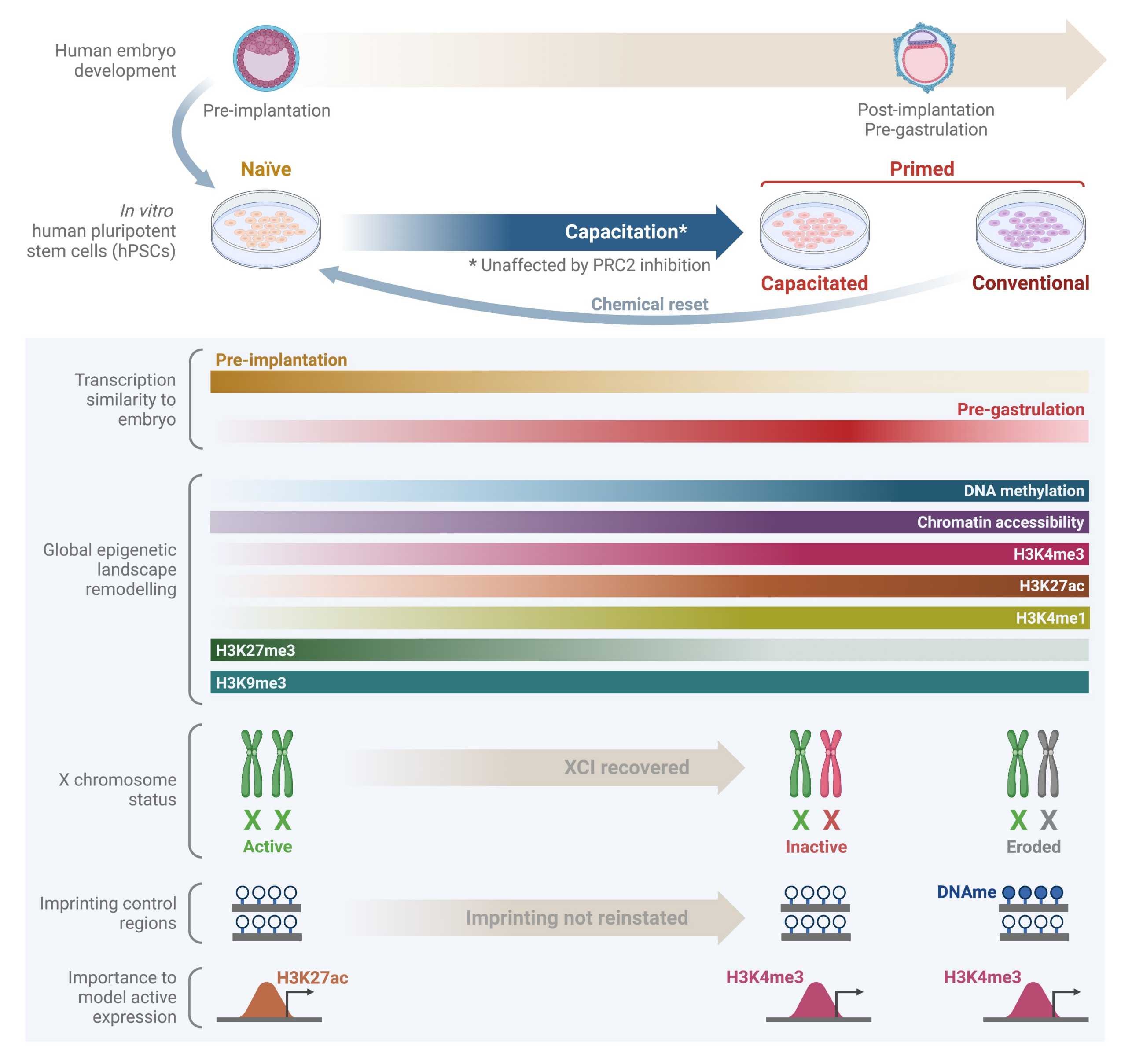New publication: Epigenetic dynamics during capacitation of naïve human pluripotent stem cells
In our latest publication, we used an in vitro system to recapitulate features of early human development and characterise the epigenetic landscape of naive and primed hPSCs. Our results show that X chromosome erosion is reversed by resetting and subsequent hPSCs capacitation.
In our latest Science Advances publication with the title "Epigenetic dynamics during capacitation of naïve human pluripotent stem cells", our lab in collaboration with researchers from the Max Planck Institute for Molecular Genetics, The Babraham Institute, the University of Sheffield, Sheffield Children's NHS Foundation Trust, and the University of Exeter used an in vitro system to recapitulate features of early human development and chart epigenetic dynamics. We found that although capacitated hPSCs acquire an epigenetic state similar to conventional hPSCs, they are transcriptionally closer to post-implantation epiblast than conventional hPSCs. Furthermore, our results show that CpG islands, gene regulatory elements, and retrotransposons are hotspots of epigenetic dynamics during capacitation, indicating possible distinct roles of specific epigenetic modifications in gene expression control between naïve and primed hPSCs. Finally, we found that PRC2 activity appeared dispensable for the capacitation and that X chromosome erosion, frequently observed in conventional female hPSCs, is reversed by resetting and subsequent capacitation. We believe our work will serve as a valuable resource for future research aiming to characterize pluripotency and uncover molecular mechanisms involved in human embryogenesis.
Check out the publication: external pagehttps://www.science.org/doi/full/10.1126/sciadv.adg1936

